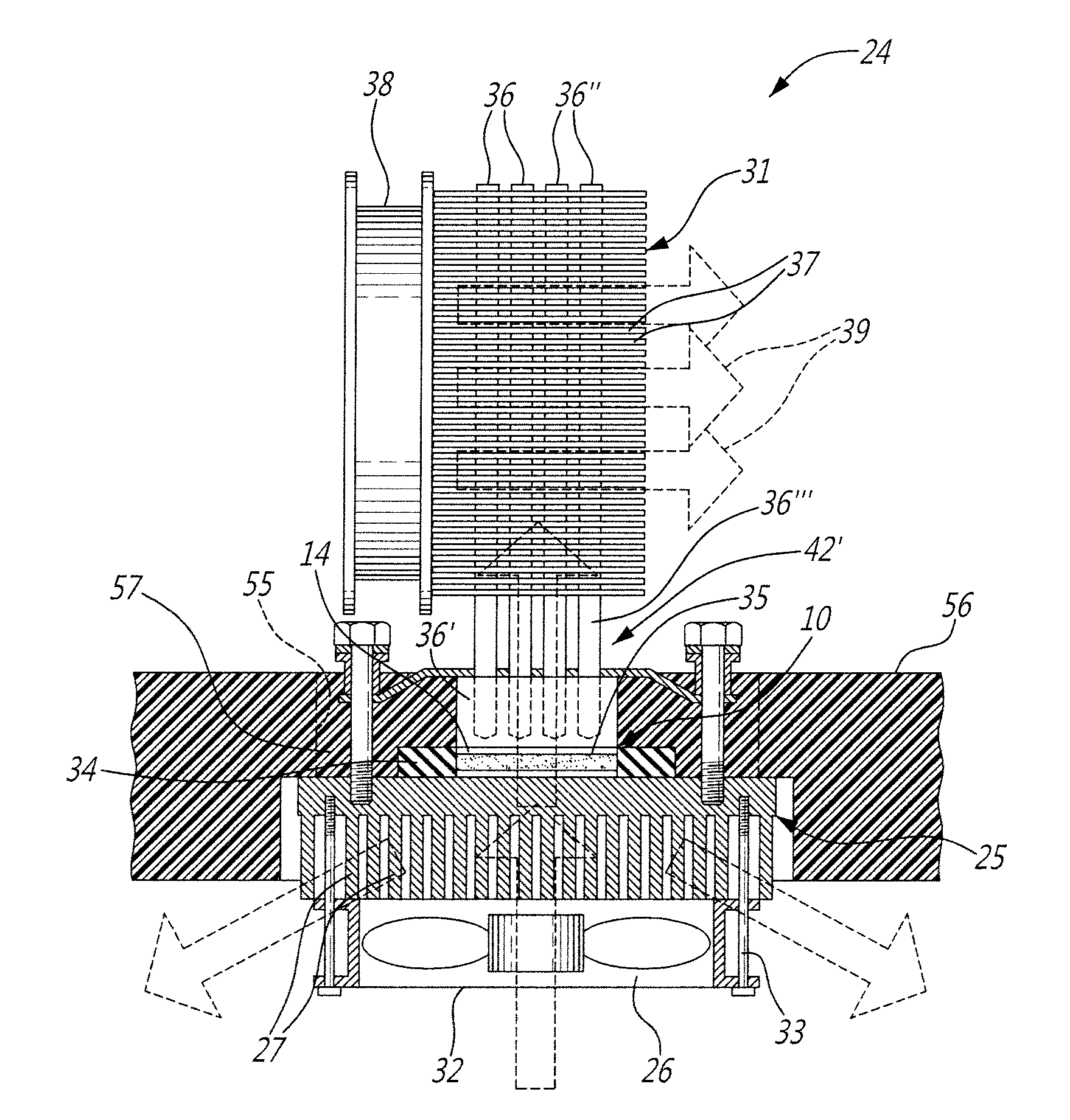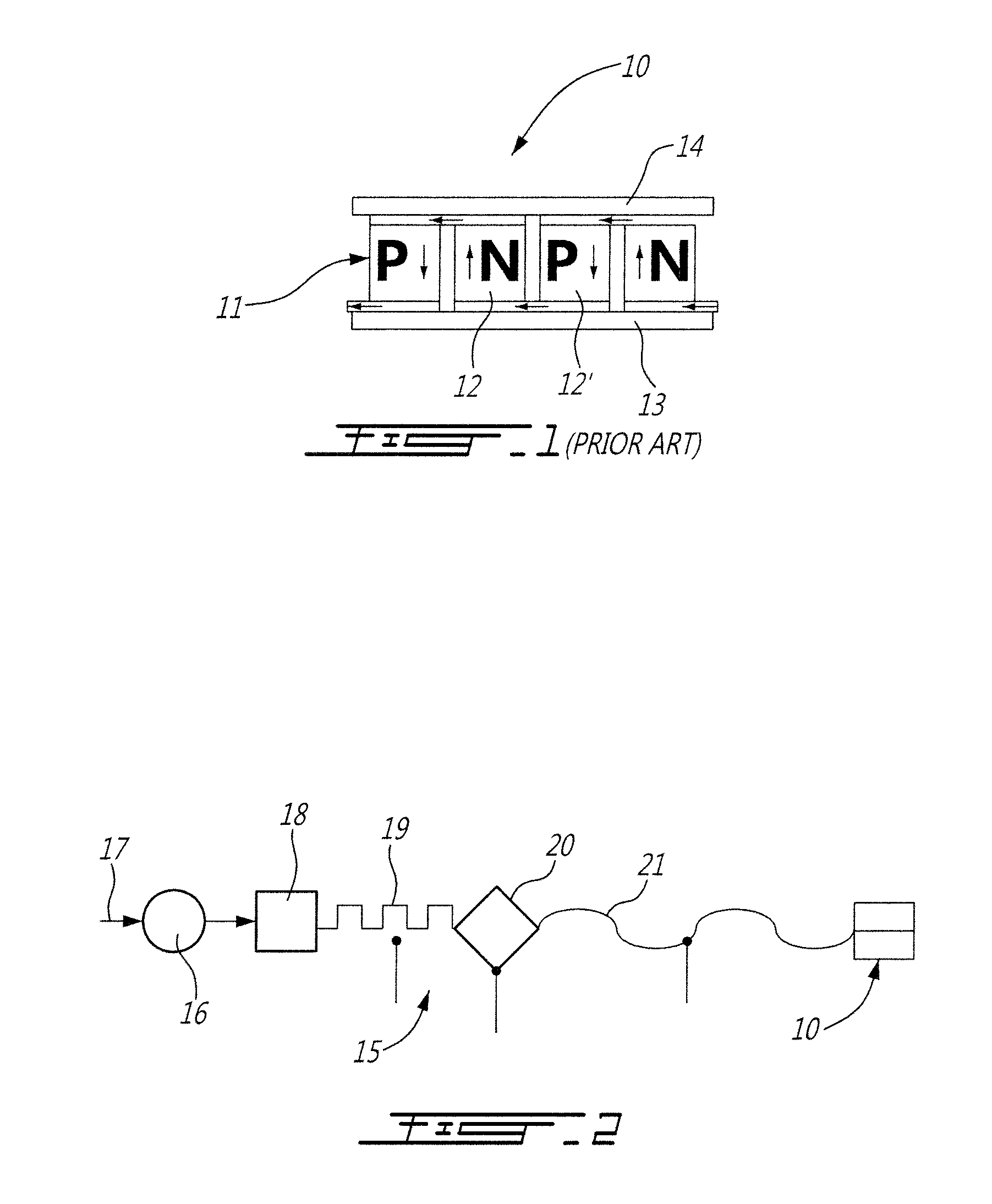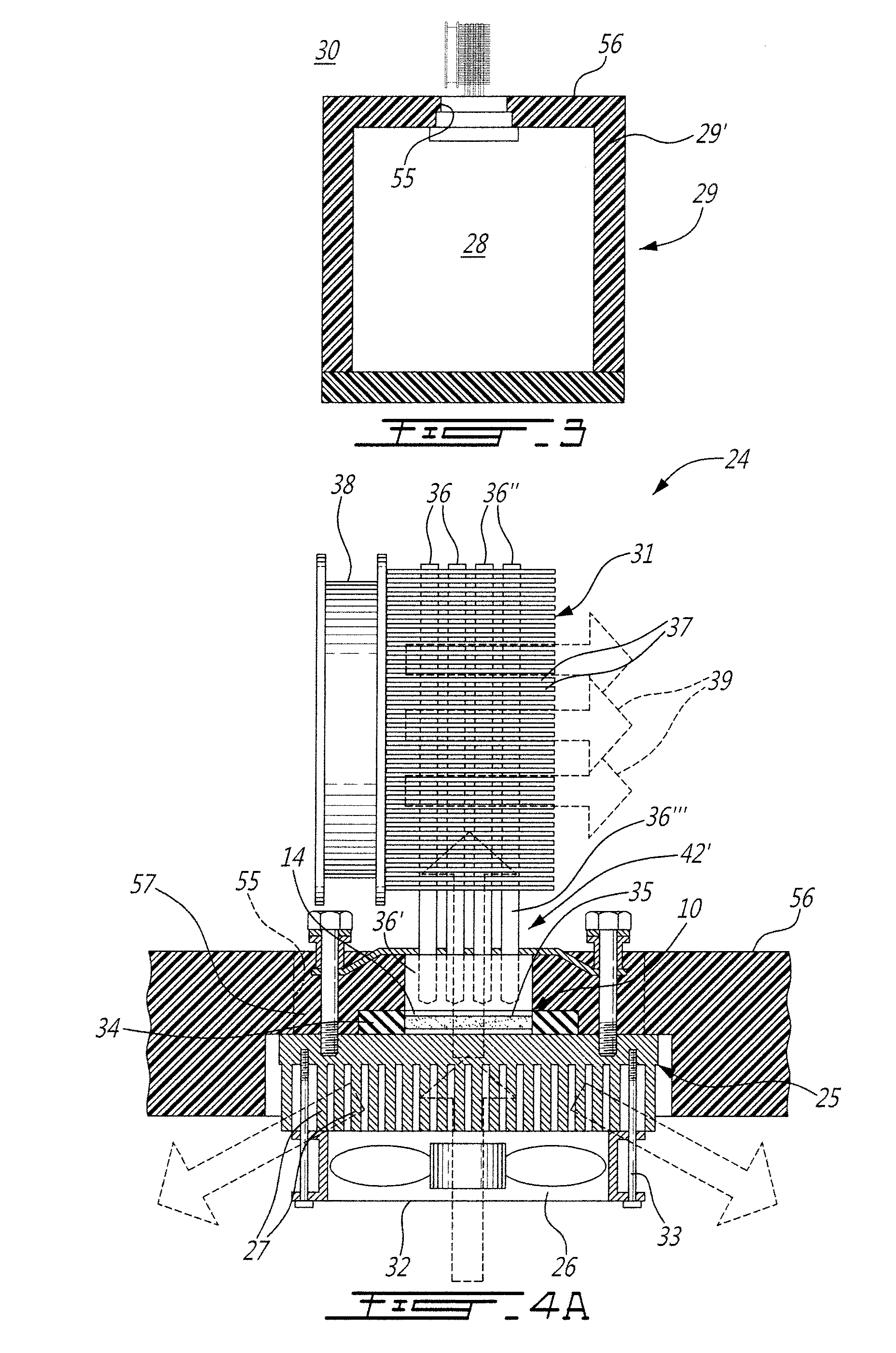High efficiency thermoelectric cooling system and method of operation
a thermoelectric cooling system and high efficiency technology, applied in the direction of dc circuit to reduce harmonics/ripples, applications, lighting and heating apparatus, etc., can solve the problems of increasing the cost of powering these devices, reducing the efficiency of these devices, and not being applicable to large refrigeration units. achieve the effect of increasing the efficiency and life of the thermoelectric modul
- Summary
- Abstract
- Description
- Claims
- Application Information
AI Technical Summary
Benefits of technology
Problems solved by technology
Method used
Image
Examples
Embodiment Construction
[0029]Referring now to the drawings and more particularly to FIG. 1, there is shown generally at 10 a typical thermoelectric module of the prior art. It comprises a semi-conductor body 11 formed of N and P type semi-conductors 12 and 12′, respectively, which are sandwiched in contact between a pair of thermally conductive plates, herein a hot plate 13 and a cold plate 14. Due to current flow in the semi-conductor body 11, one of the plates, namely plate 13 becomes hot and the other plate 14 becomes cold due to the well known Peltier effect.
[0030]Referring now to FIG. 2, there is shown a block diagram of the supply circuit of the present invention. It is customary to drive the thermoelectric modules by the use of a pulse width modulated (PWM) current which is a square wave current supply 19. This current supply 19 is an interrupted ON and OFF supply thus causing current in the semi-conductor body 11 to operate in an ON and OFF manner and which, as discussed previously, would stress t...
PUM
 Login to View More
Login to View More Abstract
Description
Claims
Application Information
 Login to View More
Login to View More - R&D
- Intellectual Property
- Life Sciences
- Materials
- Tech Scout
- Unparalleled Data Quality
- Higher Quality Content
- 60% Fewer Hallucinations
Browse by: Latest US Patents, China's latest patents, Technical Efficacy Thesaurus, Application Domain, Technology Topic, Popular Technical Reports.
© 2025 PatSnap. All rights reserved.Legal|Privacy policy|Modern Slavery Act Transparency Statement|Sitemap|About US| Contact US: help@patsnap.com



